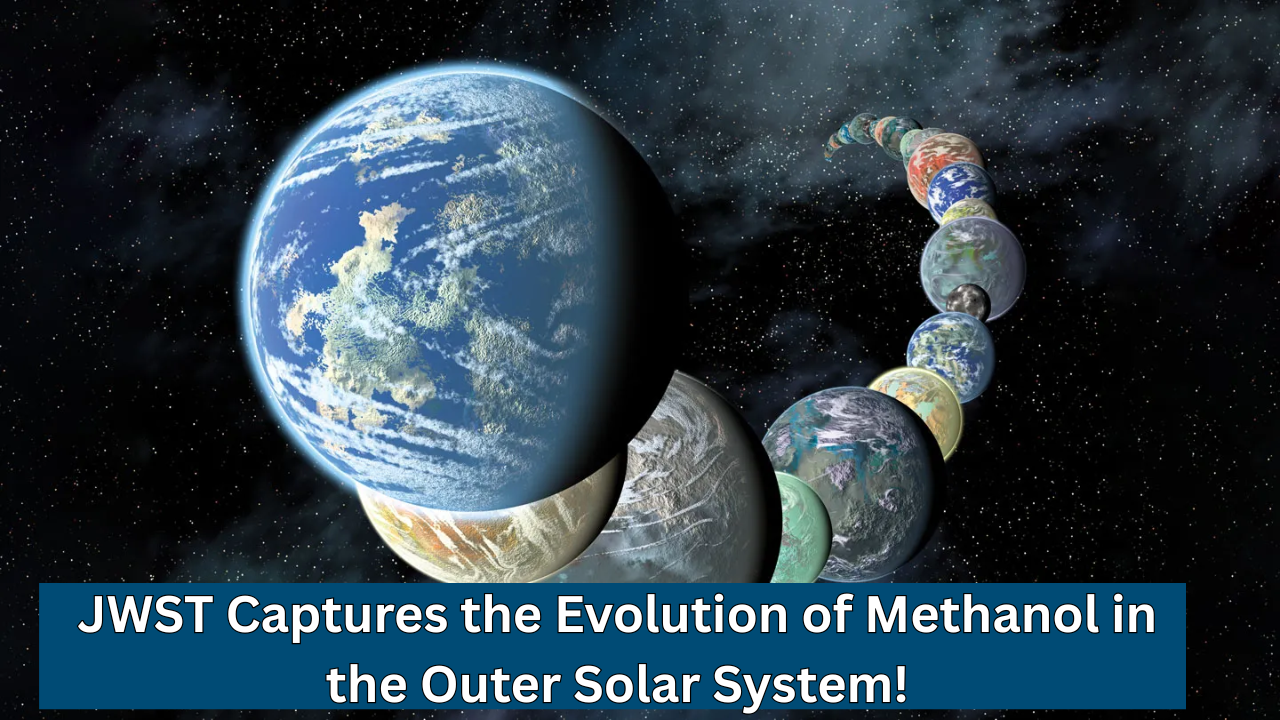Understanding the origins of life on Earth is intricately tied to understanding the evolution of chemistry across our Solar System. This journey of chemical evolution began billions of years ago in the protoplanetary disk of debris surrounding the young Sun. The path to the emergence of life on Earth was marked by the preservation of certain chemicals, some of which still survive in the farthest reaches of the Solar System.
In the outer regions, beyond Neptune’s orbit, objects known as Trans-Neptunian Objects (TNOs) orbit the Sun. These objects, which include well-known bodies like Pluto and Makemake, along with distant bodies like Sedna, are often located at least 30 astronomical units (AU) away from the Sun. A defining feature of TNOs is their cold, frozen nature, which has preserved much of their original chemistry since the birth of the Solar System.
Unlike planets closer to the Sun, where intense solar radiation drives chemical transformations, the far-flung TNOs remain much more unchanged. Their cold temperatures allow for the preservation of ancient chemical material, providing a unique scientific window into the early Solar System. Thus, these objects are often described as “time capsules” of primordial chemistry.
While many of these objects are located at extreme distances, the James Webb Space Telescope (JWST) is now providing scientists with a closer look. New findings published in The Astrophysical Journal Letters reveal how JWST has observed two distinct groups of TNOs with differing amounts of methanol on their surfaces.
The Role of Methanol in Prebiotic Chemistry
Methanol (CH3OH) plays a crucial role in the study of prebiotic chemistry, as it is one of the simplest organic molecules containing carbon, hydrogen, and oxygen. Methanol serves as a critical building block, playing a part in the creation of amino acids, sugars, and nucleobases — the foundations of proteins and nucleic acids, which are vital to life.
Methanol’s ability to survive in the cold, far-reaching parts of the Solar System makes it a crucial compound in understanding the evolution of life itself. Despite being highly vulnerable to destruction by the Sun’s ultraviolet radiation, methanol is abundant in the outer regions of the Solar System, particularly on TNOs.
However, while the Sun is too far to drive significant chemical reactions on TNOs, other sources of energy exist. Cosmic ion radiation, which exists at the outer edges of the heliosphere, impacts these distant objects. Over long periods of time, this radiation can affect the chemical composition of TNOs, altering their surface chemistry, including the methanol concentrations.
How JWST Observed Methanol on TNOs
Using JWST, researchers were able to observe the surface chemistry of TNOs, specifically focusing on methanol, and how it is influenced by cosmic radiation. Their research, titled “Spectral Diversity of DiSCo’s TNOs Revealed by JWST: Early Sculpting and Late Irradiation,” shows how two distinct populations of TNOs have different methanol abundances.
The study, led by Associate Professor Ana Carolina de Souza-Feliciano from the University of Central Florida, found that some TNOs, particularly those in the “Cliff1” group, have methanol-rich surfaces. These TNOs show a clear stratification of chemical compounds, indicating that methanol has been selectively destroyed by radiation exposure, leaving behind a record of the chemical processes that have occurred over billions of years.
Meanwhile, another group of TNOs, known as the “Cliff2” group, showed less methanol on their surfaces. The radiation on these objects has caused the methanol to break down into secondary products like carbon dioxide (CO2), water (H2O), and carbon monoxide (CO), which are the by-products of ion-irradiated methanol.
This difference in methanol concentrations points to the fact that the TNOs were not all formed under the same conditions. The Cliff1 group is believed to have formed closer to the Sun before being scattered to the outer regions, while the Cliff2 group likely formed farther out in the Solar System and has remained in the coldest, most isolated regions since then.
Implications for Understanding the Solar System’s History
The discovery of these two distinct groups of TNOs suggests that early in the history of the Solar System, planetesimals may have formed under varying conditions. Some TNOs, which have remained farther from the Sun, have preserved their primordial chemistry far more effectively than those that ventured closer.
The findings also indicate that methanol, which has been elusive in previous Earth-based observations of TNOs, could provide crucial insight into the Solar System’s formation and the conditions that existed during the early Solar Nebula. These insights are not limited to our solar system alone but may also help researchers study other star systems and protoplanetary disks.
According to the researchers, “Our findings provide compelling evidence that some of these planetesimals were formed at or beyond the CH3OH ice line in the protoplanetary disk.” This gives scientists an unprecedented opportunity to study the primordial chemistry and icy grain formation that played a critical role in the early development of the Solar System.
These results from JWST also add to the growing body of evidence showing how icy bodies in the outer Solar System, such as TNOs, can act as time capsules, preserving the chemical signatures of the early Solar System.
Future Exploration and Understanding the Cosmos
The new observations not only change the way scientists view TNOs, but they also help set the stage for interpreting future JWST observations of other distant objects, such as Neptune Trojans, Centaurs, and asteroids. Furthermore, understanding how methanol behaves on TNOs has broader implications for space exploration, fueling curiosity and inspiring future generations to continue exploring the cosmos.
Rosario Brunetto, an astronomer at the Université Paris-Saclay, who helped lead the research, emphasized the importance of these findings: “This discovery not only reshapes our understanding of TNOs but also provides a crucial reference for interpreting JWST’s observations of other distant objects.”
As we continue to study these distant objects, we move closer to understanding not just our Solar System’s origins but also the broader chemical evolution in the universe. The hunt for methanol, and other organic compounds, could one day hold the key to unlocking the mysteries of life itself.

Deepak Grover is a dedicated content writer at OTE News, specializing in government affairs, public policy, and current events. With a keen eye for detail and a passion for factual reporting, he ensures readers receive accurate and insightful news. Deepak holds a degree in Political Science and has experience in research-driven journalism.
When not writing, he enjoys reading historical books, exploring hiking trails, and staying updated with global political trends. His commitment to ethical journalism makes him a trusted voice at OTE News.




